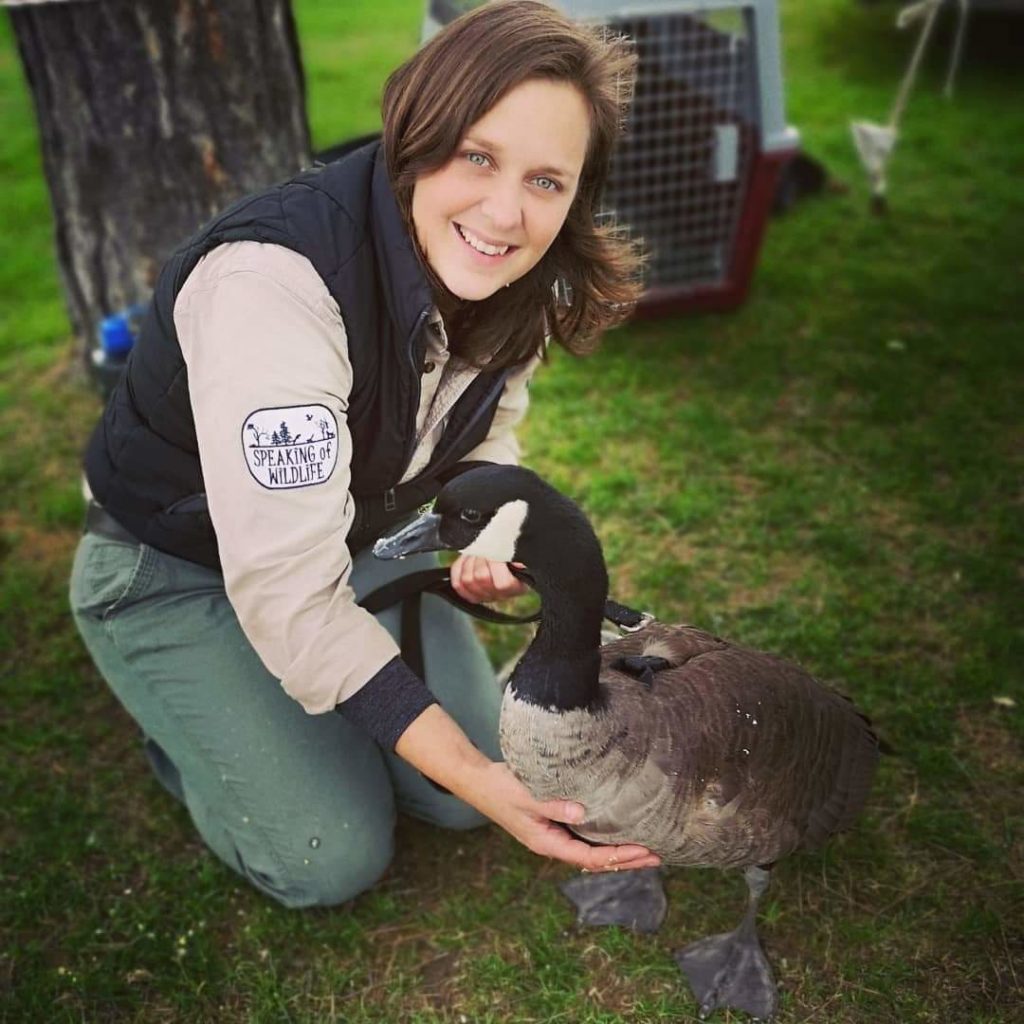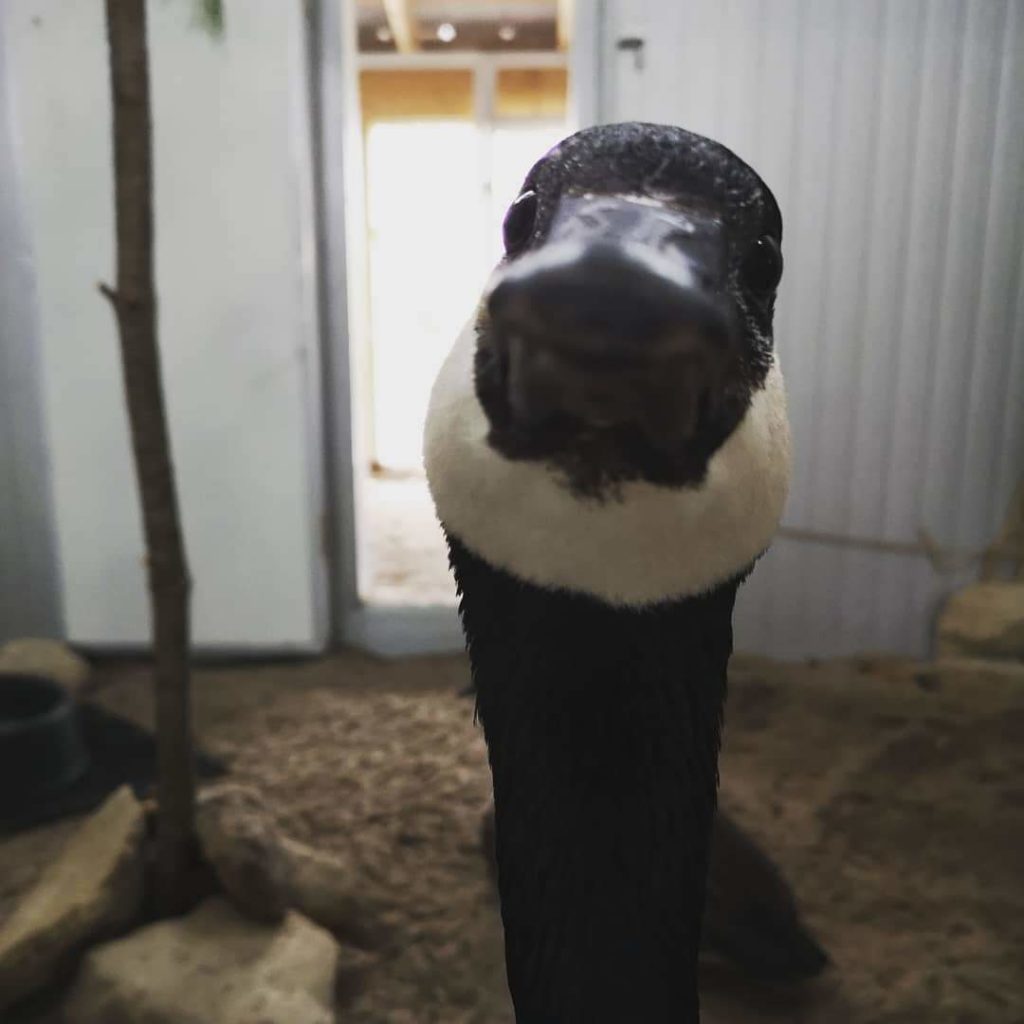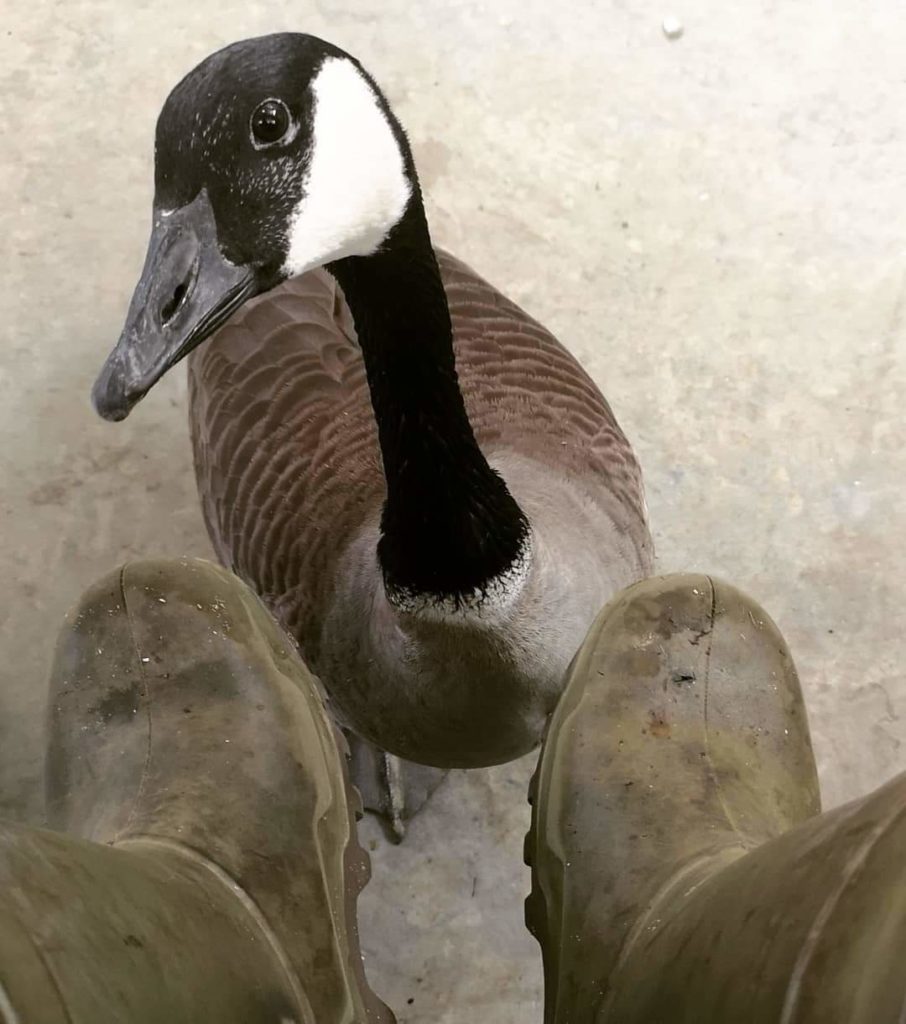Welcome to the third column featuring the animals of Speaking of Wildlife, various native species that can’t possibly be released into nature. Today we’ll be examining not one but two residents, whose relatives you have probably encountered on their way back into the country by now: our building’s bonded pair of Canada geese.
It’s almost a certainty that everyone reading this column has encountered Canada geese, and it’s only slightly less guaranteed that they may have experienced their baleful ferocity. Geese are crabby, and Canada geese doubly so; they are protective of their personal space, their nests, and ESPECIALLY of their goslings. To make hostile contact more likely still, they enjoy many of the same waterfront locations that humans do, and are especially fond of human-altered waterfronts that provide safety from predators, the chance of a treat offered by a guileless individual (please don’t do this: the next person approached might not have food, and a hungry goose is only one letter away from being a hangry goose), and crucially an abundance of grass.
The latter is particularly important: Canada geese may feed on the odd bit of this and that and insects, but their primary source of food is vegetation: aquatic algae and grass. This creates a complicated biological riddle for the goose. How can a bird, an animal whose anatomy has shed as much weight as possible for ease of flight, possibly house the complicated digestive machinery most grazers require to get anything nutritious out of the notoriously hostile and silica-coated plant that is a blade of grass?
The Canada goose, in the grand tradition of all confronted with a Gordian knot, doesn’t bother trying. Instead, it simply eats tremendous quantities of grass and excretes them after stripping only the bare minimum of nutrients from them, embracing quantity over quality and ultimately spending less than half an hour digesting each mouthful. This also explains why the many, many, many samples of goose feces that you have encountered often seem so similar to undigested plant matter: they very nearly ARE undigested. The smell, however, ruins the effect.
Hobbles and Wawa are Speaking of Wildlife’s power couple, in that they possess great power to cause pain and suffering and don’t shirk from it. Wawa was found alone in Toronto – in stark geographical defiance of his name – and brought home by a human before being taken to a wildlife rehabilitation centre, where it was discovered he was already human imprinted.
Hobbles suffered a leg injury that wouldn’t heal well enough for release into the wild, and was introduced to the centre to keep Wawa company. This has worked very well in some ways: Hobbles is strongly bonded to Wawa, and they cohabitate comfortably. Unfortunately though, Wawa had already bonded to Speaking of Wildlife’s owner, Krystal. This has created a complicated goose love triangle, where Wawa seeks to protect Krystal from Hobbles, who seeks to protect Wawa from Krystal, who really wishes they’d stop honking and biting and wing-slapping her and each other. This behaviour is most pronounced in the spring, when they have no goslings to protect but a lot of hormones to protect them with.
Speaking of protection, many of us have observed or accidentally endured the threat displays of a Canada Goose; these may include head bobbing, hissing, charging and, if unheeded, may escalate to grabbing and wing slapping. The serration of their bill and their wings, meant to propel this near fifteen-pound animal through the air on marathon continental-scale migrations, can surely leave their mark on any intruder – goose, predator and humans alike. All in all, I would suggest giving your local Canada Geese a wide berth as they pair-off, nest and fiercely protect their loved ones this spring (they don’t get that “Cobra Chicken” reputation for nothing).
Personally speaking, they are not purely malicious animals; with some effort and a little bribery, nowadays I am able to enter Wawa and Hobbles’ enclosure without being wing-slapped and only suffer exploratory nibbling, except for that one time I dropped a food bowl on Hobbles’ head; but frankly I’d have been angry too.



